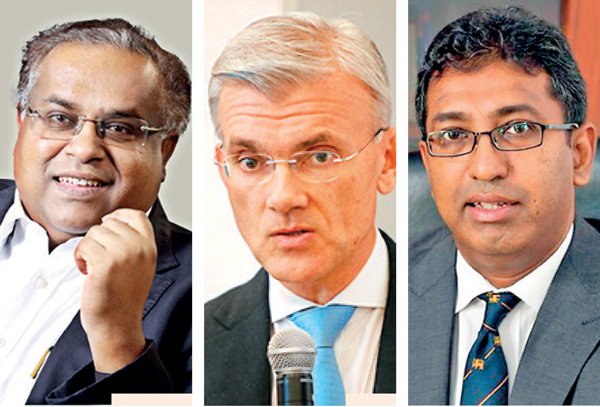20 May 2016 - {{hitsCtrl.values.hits}}

By Oxford Business Group
Thanks to close historical ties and geographic proximity, Sri Lanka stands to benefit from efforts to strengthen economic cooperation with India.
With talks around an expanding free trade agreement (FTA) in the works, momentum appears to be on Sri Lanka’s side, particularly with a rebalancing of foreign policy following the election of President Maithripala Sirisena early last year.
Agreements and partnerships
The Indo-Sri Lanka FTA (ISFTA) has been in effect since 2000, allowing Sri Lanka to export over 4000 items to India duty free, with negative lists and quota systems in place to manage the disproportionate size of the two economies.
Since the agreement was enacted, the results have been positive for Sri Lanka. Exports to India averaged around US $ 39 million prior to 2000, jumping to US $ 559 million in 2005 and US $ 625 million in 2014, according to the Sri Lanka Export Development Board. Bilateral trade, meanwhile, hit US $ 4.6 billion in 2014, up23 percent year-on-year.
While the trade balance has generally grown in India’s favour, only a small portion of goods entering Sri Lanka from India fall under the ISFTA. In 2013 this represented 13 percent of goods imported from India, compared to 65 percent of Sri Lankan exports to India, suggesting general changes in the trade balance are largely tied to external factors separate from the
ISFTA itself.
Since 2003, the two nations have worked to upgrade the ISFTA into a comprehensive economic partnership agreement; however, nationalist sentiment and opposition from various corners of society largely managed to derail discussions. The primary concern has traditionally centred on the inclusion of services in trade, which many fear would deprive Sri Lankans of job opportunities in fields like ICT.
New momentum was achieved in 2016 when a new Economic and Technology Cooperation Agreement (ETCA) was floated with strong support from Sri Lanka’s private sector and backed by the main private sector advocacy group, the Ceylon Chamber of Commerce. The agreement is expected to be finalised this year.
Specifically, the ETCA aims to boost collaboration in technical areas, scientific expertise and research among institutions, in addition to improving standards for goods and services and opening the door for human resource development and training.
“We have been doing business with India for over 2500 years,” Ceylon Chamber of Commerce Chairman Samantha Ranatunga told research firm Oxford Business Group in an interview earlier this year.
“With that in mind, there is simply no way we can keep India out of our economic equation. Broadly speaking, a practical approach must be employed. We cannot let overt nationalism blind us to the realities.”
Building links
India remains one of the largest foreign investors in Sri Lanka, with US $ 844 million recorded in the decade to 2015, according to Sri Lanka’s Board of Investment. These investments have taken place across multiple sectors, including petroleum, IT, financial services, real estate, tourism, food processing, tyres, cement, glass manufacturing
and infrastructure.
Since the agreement was enacted, the results have been positive for Sri Lanka. Exports to India averaged around US $ 39 million prior to 2000, jumping to US $ 559 million in 2005 and US $ 625 million in 2014, according to the Sri Lanka Export Development Board
Several Indian companies are also major players in the Sri Lankan economy, including oil marketer Lanka IOC, Tata Communications, Bharti Airtel, Piramal Glass, Axis Bank and ICICI Bank. A number of major property developments, including Altair and ITC, are in the works, spearheaded by Indian financiers.
Many analysts also point to the opportunity that Sri Lankan companies have in accessing the South Asian market of around 300 million people, with numerous firms already taking advantage of the growth in areas like apparel manufacturing and hospitality.
Due to connectivity issues, Sri Lanka is in many cases able to access southern India more efficiently than northern India can directly, which presents opportunities in manufacturing and transportation, provided the right systems are in place.
The majority of transshipments – the core business of the Port of Colombo – already come to and from India, representing 12 percent of total Indian throughput. With excess capacity, there is scope to improve maritime activity and links to the region.
“I think that the top priority is to strengthen ties with southern India by tackling the non-tariff barriers and extending the existing FTA to include services,” Institute of Policy Studies Chairman Razeen Sally told Oxford Business Group (OBG).
Beyond trade
Cooperation between India and Sri Lanka is not limited to trade agreements.
A proposal to link the two countries’ electricity grids could ultimately see improved reliability and stability of the Sri Lanka power supply and, in the long run, allow the country to purchase and export electricity depending on variability in price.
The interconnection – a high-voltage, direct current line to run from Madurai in India to Anuradhapura in Sri Lanka – is initially planned to transmit up to 500 MW, scalable up to 1 GW.
Pre-feasibility studies of the proposed Sri Lanka-India transmission network have already been completed, according to Sri Lanka’s electricity regulator, the Public Utilities Commission of Sri Lanka.
Although opposition from various corners of society remains perhaps the biggest hurdle going forward, ongoing feasibility studies and stakeholder consultation are aiming to land agreements that are acceptable to all parties.
“While it can be difficult for countries to come to an agreement on free trade, we must focus on achieving a mutually beneficial consensus around specific items,” Foreign Affairs Deputy Minister Dr. Harsha de Silva told OBG. “We must remain mindful of the benefits of integration into a larger
international market.”
29 Nov 2024 1 hours ago
29 Nov 2024 2 hours ago
29 Nov 2024 2 hours ago
29 Nov 2024 3 hours ago
29 Nov 2024 5 hours ago